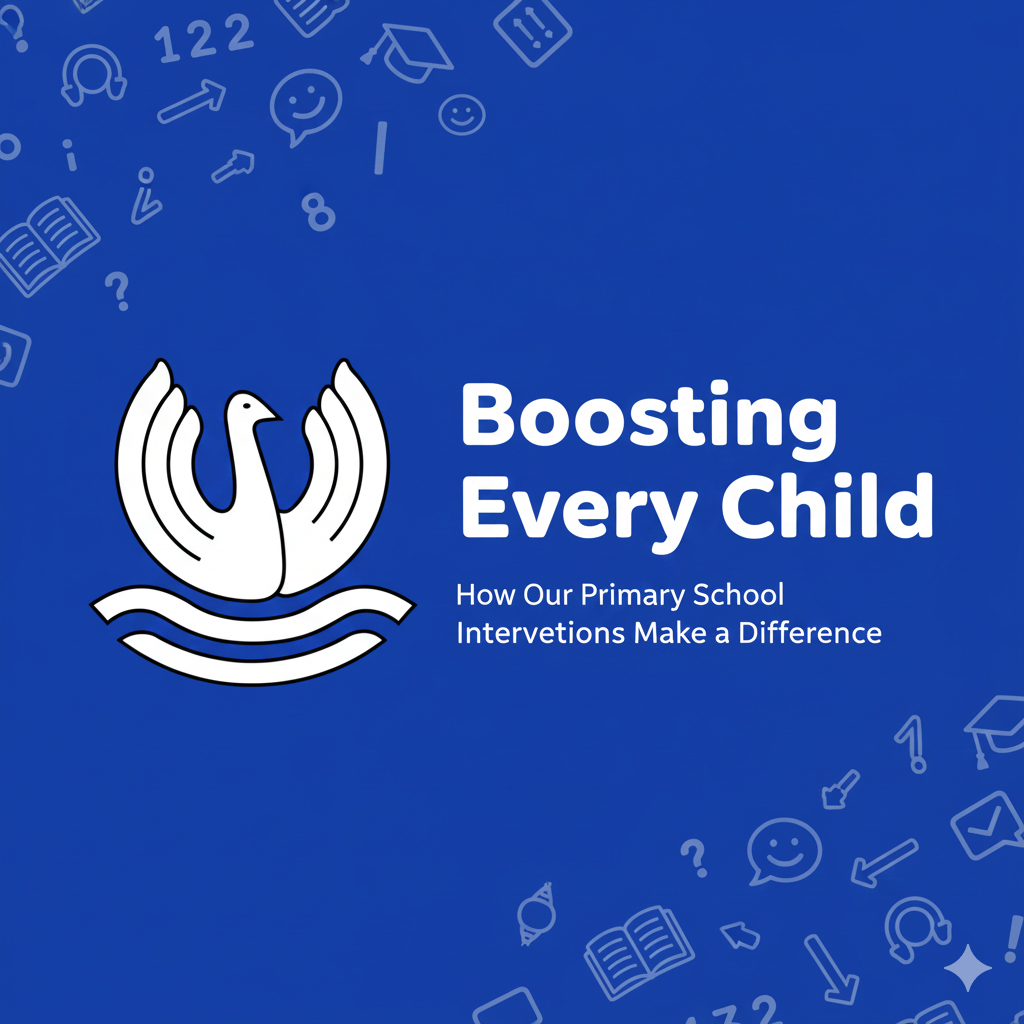As parents and educators, we all share the same goal: seeing our children thrive. In primary school, this means not just teaching the curriculum, but also recognizing when a child needs an extra push to keep up or catch up in a specific area. This is where interventions come in—they are the targeted, specialist support that bridges gaps and builds confidence.
At our school, interventions aren’t a sign of failure; they are a sign of our commitment to every individual learner. They are carefully planned, highly effective sessions designed to provide a short-term, intensive boost.
🎯 What Exactly is a School Intervention?
Simply put, an intervention is a specific, research-based program or strategy implemented to address an identified area of difficulty for a child or a small group of children. They are typically conducted outside of the regular classroom instruction for a set period.
The main goals of our interventions are:
• Closing Attainment Gaps: Bringing a child’s skills up to the expected level for their age.
• Building Foundational Skills: Strengthening core skills (like phonics or number sense) that are essential for future learning.
• Boosting Confidence: Helping children feel more capable and positive about their learning.
🧠 The Three Main Areas of Intervention
Our interventions are generally categorized into three key areas, though they often overlap:
1. Literacy Interventions 📚
Reading and writing are the cornerstones of all learning. Difficulties here can impact every subject.
• Focus: Phonics, sight reading, comprehension, and expressive writing.
• Example Interventions:
• Phonics Booster Groups: Small groups focusing on specific sound-letter relationships using systematic programs like Read Write Inc. or Letters and Sounds to secure foundational decoding skills.
• Reading Comprehension Strategy Sessions: Teaching children specific techniques (like summarizing, predicting, or clarifying) to help them understand and discuss texts.
• Handwriting/Fine Motor Skills: Specialized activities to improve letter formation and endurance for writing.
2. Numeracy Interventions 🔢
Maths anxiety can start early. Our goal is to make numbers feel accessible and logical.
• Focus: Securing a strong sense of number, mastering basic calculations, and problem-solving strategies.
• Example Interventions:
• Number Sense Programs: Focusing on concepts like place value, subitizing (recognizing a quantity without counting), and understanding number relationships.
• Times Tables Rock Stars (or similar): Targeted use of engaging resources to ensure rapid recall of multiplication and division facts.
• Concrete Manipulatives: Using hands-on resources (like Numicon or Cuisenaire rods) to visualize abstract mathematical concepts.
3. Social, Emotional, and Mental Health (SEMH) Interventions 💖
A child who is happy and feels secure is a child who is ready to learn. These interventions are crucial for overall well-being.
• Focus: Self-regulation, managing emotions, building social skills, and addressing anxiety.
• Example Interventions:
• Social Skills Groups: Practicing things like turn-taking, listening, and resolving conflicts in a safe, structured setting.
• Emotional Literacy Sessions: Helping children identify, understand, and articulate their feelings.
• Nurture Groups: Providing a small, consistent, and supportive environment for children who may struggle with the transition of the school day.
✨ The Impact: How Interventions Help Your Child
The benefits of timely and targeted interventions are profound:
1. Increased Academic Success: By filling in a specific knowledge gap now, we prevent the child from facing bigger difficulties later on. They can access the curriculum more easily.
2. Improved Self-Esteem: Success in a small intervention group often translates to feeling more successful in the main classroom. This boost in confidence is perhaps the most significant long-term benefit.
3. Better Peer Relationships: Social skills interventions help children navigate the playground and classroom dynamics more effectively, leading to stronger friendships.
4. Early Identification of Needs: The focused nature of an intervention can help teachers better understand a child’s specific learning style and needs, leading to more tailored support in the future.
🤝 Partnering With You
Interventions are most successful when there is a strong link between school and home.
• Communication is Key: If your child is receiving an intervention, your child’s teacher or the special educational needs coordinator (SENCO) will communicate the focus of the group, the duration, and what you can do at home to support it.
• Ask Questions: Please don’t hesitate to ask your child’s teacher about the specific intervention program and how it works.
We believe that every child deserves the opportunity to shine. Through the power of well-planned interventions, we are ensuring that every child at our primary school gets the specialized support they need to become a confident, successful learner!
